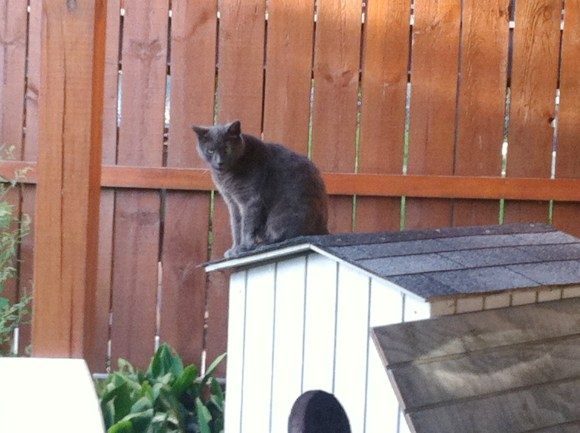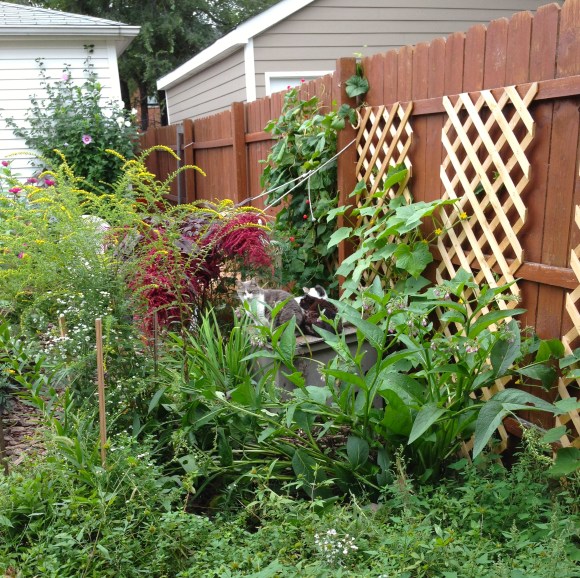TNR for an Overwhelmed Feeder
When I started TNR a decade ago I never fed cats outside. I learned about it because I was trying to catch a sick and injured cat that would not come near me. Even after their TNR I still did not feed since the cats seemed to “disappear” afterwards. What they were actually doing was going back to their feeders.
If you do TNR regularly for people who ONLY feed cats, you know how hard it is sometimes to convince them that this is the right thing to do.
Such was the case with the Joyce Division Colony. Tree House told me about the colony in the winter of 2010. Joyce was not an easy person to convince that the cats could be trapped and fixed. In fact, she never quite did it “my way.” I’d leave her traps, and she would usually coerce the cats in them herself. It was frustrating at first for me, but at the same time, this is how I ended up TNR’ing 10 cats for her. So this method actually ended up working. Nothing else would work anyways, because Joyce refused to try it. She wouldn’t even let me stay and trap in her yard.
One of the cats that showed up in her yard in 2011 was a mess. She was teeny, drooling, had URI, and for some reason she was completely wet.

Buttercup tested FIV+ and weighed only four pounds. After her TNR, I asked Joyce if she could recover her in her house with a week’s worth of Clavamox to treat the URI. Joyce agreed, and then let her out in her empty apartment downstairs. Buttercup just sat there. She was fairly friendly, and definitely could not run from danger outside. She was constantly wet because she was over grooming herself. Not only was she sick, but she was probably stressed out from being dumped by someone. She would die quickly if we put her back out, and there was no space at the shelters for her.
 Well, a week’s recovery turned into months, and Joyce admitted to me that she could not let Buttercup go. Buttercup was now upstairs with her. So it looked like Buttercup was adopted indoors. When I visited her, though, her breathing was alarming. You could hear her wheezing from across the room. When I pointed this out to Joyce, she seemed surprised, and was not into the idea of taking Buttercup to the vet.
Well, a week’s recovery turned into months, and Joyce admitted to me that she could not let Buttercup go. Buttercup was now upstairs with her. So it looked like Buttercup was adopted indoors. When I visited her, though, her breathing was alarming. You could hear her wheezing from across the room. When I pointed this out to Joyce, she seemed surprised, and was not into the idea of taking Buttercup to the vet.
Joyce owns three other indoor cats in very good health, and I kept thinking they would also get sick, but that never happened. Joyce cares for and has a beautiful home for Buttercup and her other cats. She feeds them all the time. In fact, Buttercup now weighed over six pounds. It was just this weird kind of aversion again to going to the vet.
Regardless, after much persuading, I took Joyce and Buttercup to the vet. But it took almost a year to get there. In 2012, the vet said it was one of the worst cases of lung congestion they have ever heard. Joyce seemed surprised – I was more surprised that Buttercup was surviving it, and thriving otherwise. She actually looked really good, just stressed out, but her breathing sounded terrible.


Her ears were filthy with ear mites also.

After a series of vet visits and antibiotics, Buttercup’s congestion was cured. But she needs a dental. The vet even showed us this when she pulled a tooth out of her mouth right in front of us.
Two years later, and we still have not gone to get Buttercup a dental, but yet again, she is thriving. I just visited her and Joyce this week. All I can do is gently ask how things are going, and I’ll take them to the vet when they’re ready.

As for the colony, Joyce said she only feeds four cats now outside, and all are ear tipped. No new cats have showed up since 2012. This is down from 10 cats total TNR’d – one was obviously Buttercup, another cat was admitted to a shelter, one cat died a year after being TNR’d, and three others disappeared/died. In four years, the outdoor colony population is reduced by more than half.
Joyce feeds these four remaining cats twice a day, has shelter for them, and a gorgeous garden that she keeps seasonally decorated. Can you see the black cat?
















































































